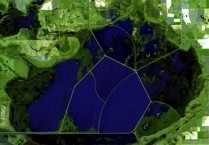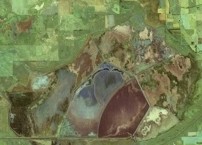Global Climate Change as a Natural Phenomenon


Global Climate Change Part 2 of a 4 part series
Discussions about global climate change and its causes are as polarizing as politics in the United States; there is NO middle ground and just as with our dire political gridlock, our leaders are providing NO answers for dealing with the changes heading our way.
When I began researching and writing part 2 of global climate change, 7,170, 977, 326 people lived on the planet Earth; 7.1 billion people, each and every one with individual ideas, concerns, and priorities and of course individual lives. Amazingly, Earth contains more human beings than it does cattle (1.4 billion) and sheep (1.1 billion), in fact, the only land-base vertebrates that outnumber human beings are likely to be rats, domestic chickens and possibly pigs, but regardless of how you look at it, global climate change is going to impact far more than just the “rats.”
Reality Check: We must face the facts; if global warming didn't exist, neither would we; global climate change was necessary for our existence and it may now be the instrument of our inevitable demise. With all its biodiversity, the planet Earth supports life because of her atmosphere and that atmosphere owes its existence in large part to global warming created by natural causes; plate tectonics emitting sulfur dioxide, naturally forming methane, water vapor, and even carbon dioxide all combining to create the environment which supports life as we know and enjoy.Mother Nature, like history, has a way of repeating herself and in the case of global climate change there is ample evidence of regular repetition, but there are repetitions and there are repetitious patterns.
While, over the centuries temperatures have indeed varied quite naturally, some annual deviations have begun to show a very concerning missing element since the early 19th Century - seasonal change. In fact, this missing anomaly is the troubling and quite alarming view often overlooked in global climate change discussions.
The Cheyenne Bottoms Wildlife Wetlands July 2012 // Credit U.S. Geological Survey (USGS) Landsat Missions Gallery
A period of annual increase in warming, or "missing seasonal change" is and has been steady for more than 250 years now, even when compared to the wild overall temperature deviations.
It appears, while the temperature changes over long periods of time have indeed varied somewhat repeatedly, those annual seasonal deviations we commonly refer to as seasonal changes between summer and winter are in a very steady and relatively rapid rate of decline.
In an odd twist in statistical analysis, viewing short-term data seems to be most telling. In short, we’re experiencing longer periods of warmer summer weather than at any time since before the mid 18th Century, even when considering the overall variations in climatic change.
We can’t foresee the future, but we can certainly hedge our bets through concerted efforts in determining what the best course of action is.
Ironically, discord exists here was well, presenting a frightening and potentially disastrous delay, yet everyone seems so absorbed in the argument, we seem to be paying little attention to dealing with the ultimate outcome, thereby accomplishing nothing in the way of planning in this gridlock of mammoth proportions.
The clock is now at 7,170,997,190 an increase of 19,864 people in the span of 20-25 minutes.
We argue antiquated religious views related to birth control, while the world’s population explodes and millions starve. We battle geopolitical viewpoints while the world’s population madly pursues mass suicide in war after war. We seek every conceivable potential financial advantage we can over our neighbors. And we debate global disaster as if it’s a dinner conversation among family rivals.
But I wonder; is there really any benefit to being on the right side of the table when all the food is gone?



